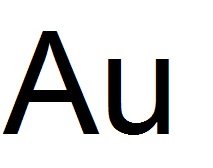How is the Convention working?
The objective of the Precious Metals Convention is to facilitate trade in precious metal articles while at the same time maintaining fair trade and consumer protection justified by the particular nature of these articles. For that purpose, the Convention has introduced the first international hallmark – the Common Control Mark (CCM).
The CCM is protected under the Paris Convention for the Protection of Industrial Property and notified by the World Intellectual Property Organisation (WIPO) to States party to the Paris Convention and to the Members of the World Trade Organization (WTO) not party to the said Convention. The CCM is published in the WIPO Article 6ter Express Database.
The CCM is a conformity mark indicating that the article of precious metals has been controlled in accordance with the Convention’s requirements. The Convention enables national Assay Offices, designated in line with the Convention, to apply the CCM to articles of platinum, gold, palladium and silver after their fineness has been tested in accordance with agreed testing methods. Each Contracting State allows goods marked with this CCM to be imported without further testing and marking, if such articles qualify for the domestic market.
Platinum, gold and silver are defined as precious metals in most Contracting States. Palladium, which was introduced in 2010, is not accepted everywhere. For the acceptance of palladium in Contracting States, see related documents at the bottom of the page.
Multimetal articles can also be marked with the CCM under the Convention. However, they may not be accepted in all Contracting States. The survey on the acceptance of multimetal articles is available here.
Articles bearing the Convention mark (the CCM) - together with the national Assay Office Mark, the responsibility mark and the fineness mark (the latter can be combined with the CCM) - are accepted without further testing or marking by any of the Contracting States if such articles qualify for the domestic market. Although exceptional, check tests are nevertheless permitted.
There are two types of CCM:
Type 1 is the historically first CCM and indicates the precious metal (i.e. platinum, gold, palladium or silver) and its fineness in parts per thousand. The nature of the precious metal is indicated by the form of the shield. It is applied together with the Assay Office mark and the responsibility mark. These 3 marks are compulsory when applied together. Other marks, which may be applied in addition, are optional.
.jpg) |
.jpg) |
 |
|
COMMON CONTROL MARK TYPE 1 |
ASSAY OFFICE MARK |
RESPONSABILITY MARK |
As Type 1 of the CCM is specific to the precious metal, it exists in 4 different shapes:
|
Platinium |
Gold |
Palladium |
Silver |
.jpg) |
.jpg) |
.jpg) |
.jpg) |
|
999-950-900-850 |
999-916-750- |
999-950-500 |
999-925-830-800 |
Type 2 is the more recent version of the CCM and was introduced in 2019. It is a pure conformity mark and not combined. As a result, it has a standardised octagonal shield. It is applied together with the Assay Office mark, the responsibility mark, the nature of the precious metal and the fineness mark as follows:
 |
 |
 |
|
|
|
COMMON CONTROL MARK TYPE 2 |
ASSAY OFFICE MARK |
RESPONSABILITY MARK |
PRECIOUS METAL MARK |
FINENESS MARK |
Some marks can be combined such as the Assay Office mark and the type of precious metal, indicated e.g. by a symbol (e.g. Au for gold).
The responsibility mark (also called sponsor’s mark in some countries) has to be registered in the country which applies the CCM. Thereby, it does not need to be registered in the importing country.
In some countries the fineness mark is applied by the manufacturer before the assaying and marking process.
Members will only accept CCM marked articles of a fineness, which is legal in the importing country. Each country remains free to determine the standards of precious metal articles that can be manufactured or put on sale within its borders. 5 CCM standards of fineness are legal standards of fineness in all Contracting States: Pt 950, Au 750, Au 585, Ag 925 and Ag 800. For the survey on recognised standards of fineness in the Convention’s Contracting States, click here.
Moreover, as any other imported products, CCM marked articles are subject to national requirements regarding health (e.g. presence of nickel or cadmium), security, anti-dumping, child protection, etc.
The marking of articles of precious metals with the CCM is carried out on a voluntary basis; compulsory hallmarking is not required from the Contracting States to the Convention. This means in practice that an exporter has the choice between (i) asking his domestic assay office for the CCM marking or (ii) sending its goods without CCM to the exporting State. In the first case, CCM-marked goods will be accepted without further control in the importing country while in the second case, the articles will have to meet the requirements of the importing State (e.g. registration of the responsibility mark).
As the requirements under the Precious Metals Convention are often more rigorous than domestic regulations, the CCM has earned an international reputation of integrity and quality.
Related documents (PDF)
For the survey on the acceptance of palladium in Contracting States click here
For the survey on recognised standards of fineness in Contracting States click here
